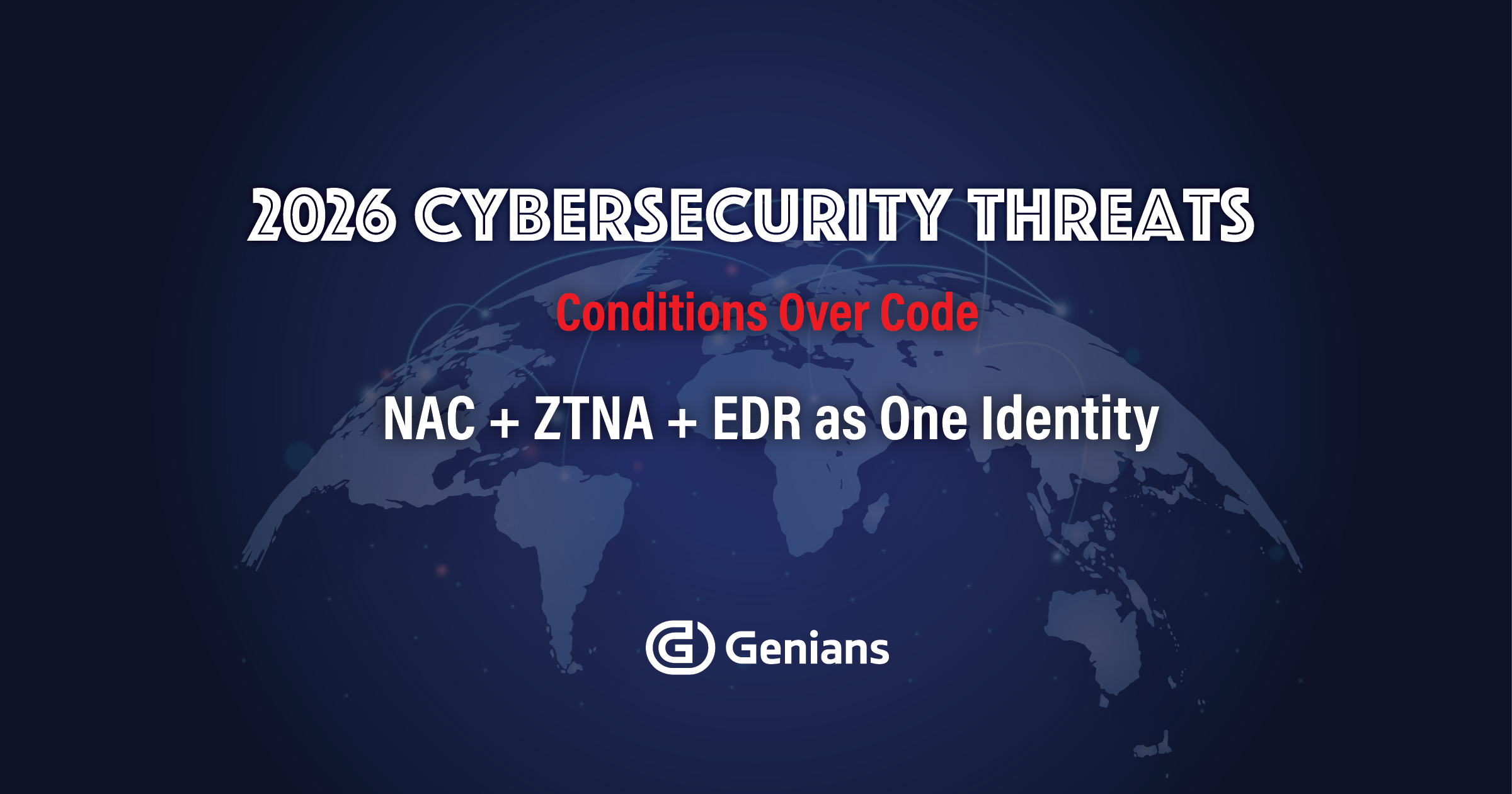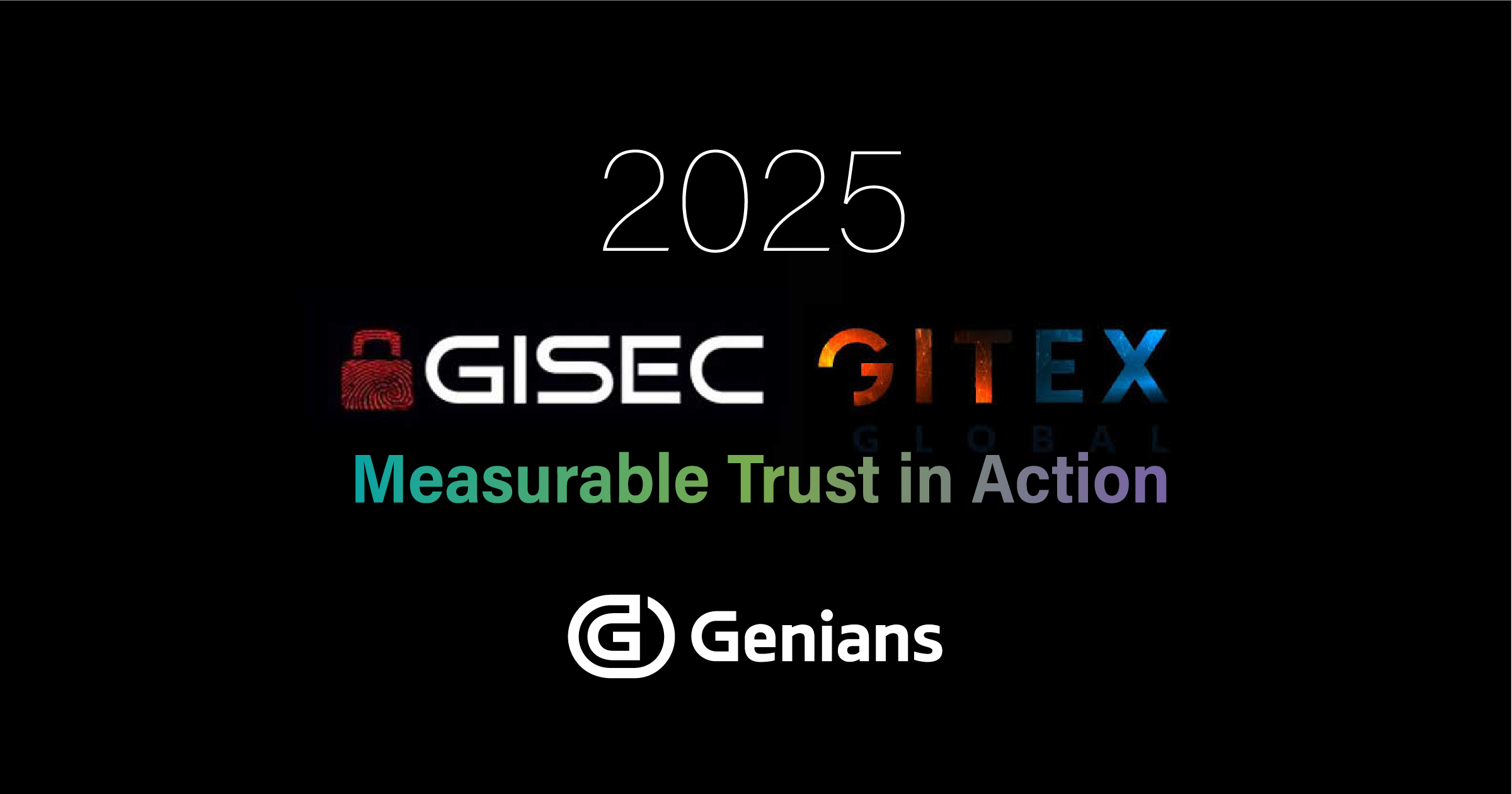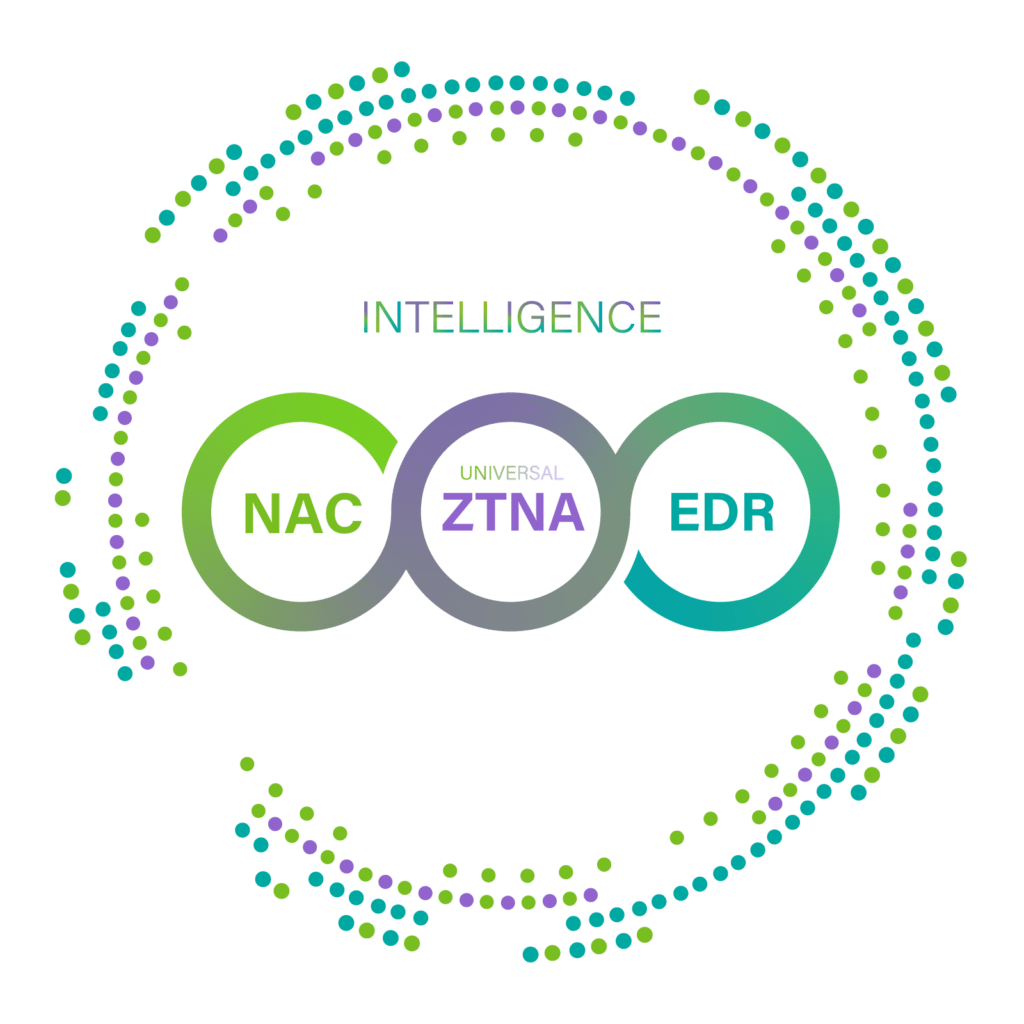Executive Summary
The contemporary cyber threat landscape is characterized by a dynamic competition between advanced Advanced Persistent Threat (APT) groups and cybersecurity defenses. Analysis of recent threat intelligence from Genians reveals a persistent and evolving set of adversaries, predominantly state-sponsored entities such as Kimsuky, APT37, and Konni, alongside financially motivated groups like LockBit and specialized malware like BPFDoor. These actors consistently employ advanced tactics, techniques, and procedures (TTPs), with spear phishing serving as a common initial access vector. A notable trend is the increasing reliance on fileless execution, sophisticated obfuscation, and the abuse of legitimate cloud services to evade traditional signature-based security solutions.
In this dynamic environment, Endpoint Detection and Response (EDR) solutions have emerged as an essential component of a strong security posture. Genian EDR demonstrates its capability to provide visibility into complex attack chains, detect anomalous behaviors that bypass conventional defenses, and enable proactive response measures. The insights gleaned from these real-world cases underscore that effective cybersecurity hinges not just on preventing known threats, but on the ability to detect and respond to novel and evolving attack methodologies at the endpoint level.
Key Threat Intelligence Cases by Genians
Genians Security Center (GSC) continuously monitors and analyzes emerging cyber threats, providing timely intelligence. The following table summarizes key threat intelligence cases, highlighting the diverse attack methodologies employed by various threat actors and the effectiveness of Genian EDR in detecting and responding to these sophisticated threats. The consistent recency of these reports, with many updated to July 2025, reflects Genians’ ongoing commitment to real-time threat engagement and its proactive role in understanding the evolving threat landscape.
| Report Title (URL) | Threat Actor(s) | Primary Attack Vector(s) | Threat Techniques | Genian EDR in Action |
|---|---|---|---|---|
| Suky Castle | Kimsuky group | Spear phishing (VBS-based, Email-based 'ClickFix', Website-based 'ClickFix' via fake recruitment site) | VBScript (obfuscated), PowerShell (obfuscated, 'ClickFix' tactic), BabyShark series (LNK, Launcher, manifest file), AutoIt v3, QuasarRAT | Precise identification of threat flow, visibility into PowerShell execution, MITRE ATT&CK tagging, Attack Story Line, C2 communication monitoring, firewall integration, IoC updates |
| APT37 Attack Campaign Impersonating North Korean Human Rights Organization | APT37 (RedEyes, Group123) | Spear-phishing emails (DOC, LNK) | ROKRAT (InfoStealer, Backdoor), Wiper, Steganography, Encryption, PowerShell | Detected attempts, provides visibility for proactive response |
| Kimsuky Group's Triple Combo Attack (Facebook, Email, Telegram) | Kimsuky Group (AppleSeed) | Facebook, Email, Telegram-based infiltration | JSE script, VMProtect-packed DLL, tripservice.dll (RAT, info collection, encryption) | Machine learning detection, high visibility, threat hunting, MITRE ATT&CK integration, forensics |
| APT37 Operation. ToyBox Story (Disguised as Think Tank) | APT37 | Spear-phishing emails (LNK in ZIPs from Dropbox) | RoKRAT variant, Fileless execution (PowerShell, in-memory shellcode), Screenshot, AES/RSA/XOR encryption, LoTS (Dropbox C2) | Immediate detection, attack storyline, abnormal behavior detection (XBA for cloud C2), MITRE ATT&CK |
| BPFDoor Linux Malware | Red Menshen (Chinese), others | Linux server targeting (initial entry under investigation) | BPFDoor Linux backdoor, Process name randomization, Timestamp manipulation, RC4 encryption, Reverse/Bind Shells | Visually tracks behavior, enables rapid identification and response for open-source variants |
| Konni APT Campaign Impersonating Korean National Police Agency and National Human Rights Commission | Konni APT | Spear-phishing emails (LNK, MSI, BAT in ZIPs) | LNK, AutoIt scripts (Lilith RAT), MSI packages, Scheduled tasks for persistence | Threat hunting, risk management, C2 communication monitoring, behavioral anomaly detection |
| APT Attack Leveraging Martial Law Theme (Kimsuky Indicators) | Kimsuky Group (strong indicators) | Spear phishing (malicious URL, OS-dependent payload) | Malicious CPL file, DLL Side-loading (legitimate Google Updater), Quasar RAT, AES encryption, Persistence (registry) | Anomaly detection, real-time monitoring, comprehensive event collection, perfectly detected/blocked CPL files/C2 comms |
| APT37 Malicious HWP Cases Distributed via K Messenger | APT37 | Spear phishing, K messenger group chats (HWP, LNK in ZIPs) | HWP (OLE exploitation), LNK, RoKRAT (fileless, in-memory, info exfiltration via pCloud API) | Detects abnormal HWP behavior, real-time threat notifications, XBA rules for fileless RoKRAT/C2 |
| Kimsuky Group's Email Phishing Campaigns | Kimsuky Group (TA406) | Email phishing (URL phishing, often malwareless) | Primarily credential theft via phishing sites; some malicious DOC files with macros | Security rules (IoC registration), access history query, policy management, user notification |
| APT37 Cyber Reconnaissance Activities | APT37 | Spear phishing (LNK), Normal document delivery, Web beacon reconnaissance | RoKRAT (XOR-encrypted, pCloud API, info collection, fileless via Shellcode) | Detects fileless intermediate flows, anomalous behavior, IoC patterns, event analysis |
| Kimsuky Group's "BlueShark" Threat Tactics | Kimsuky Group (BlueShark family) | Spear phishing (impersonation, phishing sites, cloud services, LNK) | LNK, ISO, MSC, HWP (OLE data), 'VbsEdit' abuse (DLL side-loading), Decoy documents | Anomaly detection, identifies MSC execution, detects HWP via IoC/XBA rules, selective threat response |
| Expanding Konni Threat Campaign (Linked to Kimsuky Cluster) | Konni (linked to Kimsuky) | Spear phishing (malicious files in emails, legitimate cloud/FTP abuse) | LNK, EXE, SCR, multi-stage script obfuscation, AES CTR encryption, Task Scheduler abuse, FTP for RATs, Malicious DLLs | Early detection of LNK anomalies, detailed threat info, attack storyline, AMSI event summary, custom dashboards |
| Konni APT Campaign Utilizing AutoIt for Defense Evasion | Konni APT (linked to Kimsuky) | Spear phishing emails (LNK in ZIPs, sophisticated sender domain manipulation) | Malicious LNK (PowerShell, decoy HWP), AutoIt scripts (Lilith RAT, AsyncRAT/RftRAT with Process Hollowing), Persistence, Keylogger, RDP port forwarding | Detects abnormal AutoIt behavior, collects command line, identifies threat elements, displays C2 info, attack storylines, TOP 10 abnormal activities |
| Kimsuky APT Attack Impersonating Foreign Media Correspondent | Kimsuky APT, Mustang Panda (mimicking) | Spear phishing (HWP, MSC via OneDrive, prolonged conversations) | HWP (OLE, batch file, anti-malware check, VBScript, scheduled task), MSC (batch/VBScript, scheduled tasks, PlugX) | Effective in early detection/response for MSC, collects command line/event processes, XBA rules for abnormal behavior, forced termination, sample collection |
| Kimsuky APT Group's New Attack Strategy (Facebook Messenger, MSC files) | Kimsuky APT (BabyShark, ReconShark) | Fake Facebook accounts, Messenger conversations, malicious URL to OneDrive | Malicious.msc file (executed by mmc.exe), VBScript ('warm.vbs') downloads payloads, collects system info, scheduled task for persistence | High visibility into.msc command line, behavioral detection, script/HTA anomaly detection, C2 network communication detection |
| Multi-step DropBox commands and TutorialRAT behind APT43 | TutorialRAT and XenoRAT. | Spear-phishing with malicious LNK files delivered via legitimate cloud services like Dropbox. | TutorialRAT (TutRAT) - C# based RAT, XenoRAT, Multi-stage payload delivery (ps.bin, r_enc.bin, info_sc.txt, info_ps.bin, m_ps.bin, ad_ps.bin), Info Stealer, Persistence (Mutex, Task Scheduler), Keylogger, Screenshot Capture, Browser Credential Stealer, Remote Control (UltraVNC). | Detects these threats through behavioral analysis, identifying suspicious PowerShell commands and Dropbox API communication. |
| Increase in Fileless Attacks by APT37 (RoKRAT Malware) | APT37 | Spear-phishing via email (LNK in ZIPs, cloud staging via Dropbox/pCloud) | RoKRAT variant (fileless, in-memory, info collection, exfiltration via pCloud API), PowerShell | Early detection (LNK, XBA rules), detects network comms, identifies fileless RoKRAT, comprehensive response, validation via simulation |
| Konni APT Group Targeting Bitcoin Traders | Konni APT | Spear phishing via email (LNK in ZIP with decoy PDF) | Malicious LNK (obfuscated PowerShell, CAB extraction, VBS/BAT chain for info collection/exfiltration/download), RC4+Base64 encryption | Early detection of abnormal behavior, immediate detection of PowerShell/batch, IoC-based diagnosis, attack storyline, C2 comms confirmation |
| Nation-State APT Attack Leveraging New Year's Column (Custom XenoRAT) 15 | "fox tian" (linked to North Korea) | Spear-phishing email (LNK in password-protected ZIP via large-capacity link) | Malicious LNK (PowerShell, Base64 decode), Scheduled task for persistence, Custom XenoRAT (RAT, HVNC) | Detects abnormal PowerShell network connections (XBA), decoy file creation, XenoRAT C2 comms |
| APT Attack Impersonating Webinar Invitation (ROKRAT) | APT37 (ROKRAT) | Spear phishing (malicious URL downloads LNK in ZIP from Dropbox) | Malicious LNK (long command-line, hidden spaces, replaces with decoy PDF), fileless ROKRAT (XOR-encrypted EXE, info collection, pCloud C2) | Early detection of abnormal LNK, immediate detection of network comms, threat monitoring/analysis, proactive response |
| APT37 Attacks Disguised as "North Korean Market Price Analysis Documents" | APT37 | LNK, HWP, HWPX, XLSX, DOCX files (malicious OLE insertions) | Malicious OLE insertions (connects to C2, calls exploit) | Detects APT37 activities, limits impact, required for unknown vulnerability attacks, rapid threat identification |
| Kimsuky APT Group's "FlowerPower APT Campaign" | Kimsuky APT (FlowerPower) | Malicious OLE insertions in HWP documents (impersonating foreign news channels) | "FlowerPower" series tools, encrypted PowerShell commands, GitHub as C2 | Secures threat visibility, early detection to minimize damage, proactively identifies threats |
| Kimsuky APT Group's "Storm Operation" and BabyShark Family Association | Kimsuky APT (BabyShark toolkit) | Two-track spear phishing (fake domains, malicious attachments/links to fake login pages) | CHM, LNK, MS Word.doc with macros, Remote template injection, Mutex values, OPSEC failures (North Korean linguistic traces) | Utility in responding to/preventing fileless attacks, provides proactive threat intelligence |
| Operation DarkHorse CHM-based Attack Analysis | Kimsuky Group (suspected) | Spear phishing emails | Malicious CHM files (execute VBS/JSE scripts embedded in HTML) | |
| Konni APT Campaign Targeting Unification and North Korean Human Rights Sectors | Konni group | Spear phishing (ZIP attachments with LNK) | Malicious LNK (leak computer info, VBS/BAT call obfuscated scripts) | Provides visibility into infiltration/threat activities, effective in analyzing fileless, enables early detection of abnormal behavior |
| Browser In The Browser (BitB) Attack by APT37 | APT37 | Email phishing (mimics legitimate program, lures to fake website with SSO) | Browser In The Browser (BitB) technique (manipulated pop-up window within browser for credential theft) | GSC identified/analyzed, informs users/enhances products, highlights GSC's threat hunting |
| Tracking AsyncRAT Malware using EDR | Attackers exploiting AsyncRAT | Phishing emails or phishing sites | AsyncRAT (open-source.NET RAT, misused for info theft/system control) | EDR used to track, GSC conducts threat case analysis to respond to evolving TTPs |
| Konni APT Campaign Disguised as National Tax Service Notification | Konni APT | Spear phishing (ZIP with LNK and decoy HWP) | Malicious LNK (collects/exfiltrates info, multi-stage VBS/BAT/Powershell), CHM, Obfuscation, "Kill switch" | GSC identified new activity, tracks/observes, detects complex abnormal terminal behaviors early, provides visibility, enables rapid response |
| LockBit Ransomware Attack | LockBit ransomware organization (Russia-based) | Phishing emails with malicious IMG files (bypasses MOTW) | Hidden LNK, BAT, VBS, 7z.exe, Autologon.exe, LockBit ransomware; Multi-stage execution, Privilege escalation, Persistence (autologon, safe mode boot, registry) | Detects/responds to complex, multi-stage threats, detects key events in early stages, threat event query, visual storyline |
| APT37 Attack Targeting macOS Users | APT37 | Two-stage APT: initial phishing for password/recon, then macOS spear phishing (ZIP with malicious.app) | Malicious AppleScript (OSA standard) for info collection, Staged commands from C2,.app disguised as HWP | Genian EDR macOS agent detects abnormal behavior early, facilitates rapid response, blocks new threats |
Common Observations and Strategic Trends
Analysis of Genians’ threat intelligence reports reveals key trends and strategic shifts by advanced threat actors.
A. Persistent Threat Actors and Their Evolving Tactics, Techniques, and Procedures (TTPs)
Active and adaptive APT groups, primarily linked to North Korea, dominate the threat landscape.
- Kimsuky Group:
- Campaigns: AppleSeed, BabyShark, FlowerPower, BlueShark, Storm Operation, DarkHorse.
- Targets: North Korea-related fields, finance, virtual assets.
- OPSEC Failures: North Korean linguistic expressions in communications/malware code.
- File Types: MSC, LNK, HWP, DOCX, VBS, BAT, AutoIt scripts, CHM files.2
- Abused Services: Facebook, Telegram, OneDrive, Proton Drive, GitHub, Google Drive, Zoho Mail, free domain services.
- APT37:
- Aliases: RedEyes, Group123, Emerald Sleet, Velvet Chollima.
- Focus: Cyber espionage against South Korean public/private sectors, especially North Korea-related affairs.
- Vulnerability Exploitation: Exploits zero-day vulnerabilities in HWP, SWF Flash Player, and Internet Explorer.
- TTPs: LNK, HWP/DOC, Android APKs, macOS apps, steganography, PowerShell, encryption, fileless techniques.
- Abused Cloud Services: Dropbox, pCloud, Yandex, OneDrive, Google Drive for C2 and distribution.
- C2 Infrastructure: Uses Russian Yandex and Google Gmail accounts.
- Konni:
- Association: Strongly associated with the Kimsuky cluster.
- Targets: Unification/North Korean human rights sectors, finance, Bitcoin traders.
- Methods: LNK, AutoIt scripts, VBS, BAT, MSI packages, EXE, SCR, CHM.
- Abused Services: Legitimate cloud services, WordPress, free web hosting, FTP for C2. C2 servers often in Russia and Netherlands.
- Other Noteworthy Actors:
- Red Menshen (Chinese): Associated with BPFDoor Linux malware.
- LockBit (Russia-based): Ransomware organization demonstrating multi-stage attacks, including safe mode exploitation.
- Mustang Panda (Chinese): Observed mimicking Kimsuky’s MSC attack strategy.
Convergence of TTPs suggests a dynamic environment where successful attack methodologies are shared or replicated, indicating an evolution in evasion techniques. North Korean linguistic traces in Kimsuky, APT37, and Konni communications/code indicate their national affiliation. Focused targeting underscores strategic objectives for intelligence gathering and financial gain. Rapid exploitation of zero-day vulnerabilities and continuous malware mutation demonstrate agility.
B. Dominant Attack Vectors and Social Engineering
Spear phishing remains the primary attack vector for initial access. Threat actors focus on social engineering with customized lures.
- Lures: Impersonate officials, journalists, human rights organizations, tax agencies, academic conferences. Exploit current events.
- Trust Building: Prolonged conversations via Facebook Messenger and Telegram before payload delivery.
- Malicious File Types:
- LNK (Shortcut files): Common, embedding PowerShell or batch commands.
- Office Documents (HWP/HWPX/DOC/DOCX/XLSX): Exploit OLE objects, remote template injection, or malicious macros.
- MSC (Microsoft Management Console) files: Emerging trend, low detection rates by traditional AV.
- Scripting Languages (VBS/BAT/PowerShell/AutoIt): Core of multi-stage execution and fileless techniques for persistence, C2, RAT injection.
- Other Formats: CHM files, IMG/ISO/VHD for MOTW bypass, MSI packages, macOS, .app files.
- Abuse of Legitimate Cloud Services (LoTS): Dropbox, pCloud, Yandex, OneDrive, Google Drive, GitHub, Zoho Mail, Telegram, Facebook for C2, hosting, distribution.
- Advanced Techniques: Web beacon reconnaissance, Browser In The Browser (BitB) attacks for credential theft.
The shift to less common file types, scripting languages, and legitimate service abuse is a strategy to bypass signature-based detection. Behavioral monitoring and technical controls are important. Expansion to macOS users indicates a broader attack surface.
C. Malware Evolution and Evasion Techniques
Threat actors continuously evolve malware and evasion techniques for stealth and persistence.
- Fileless Execution: Common, especially with RoKRAT (APT37) and BabyShark/BlueShark (Kimsuky). Malware executes in memory via shellcode.
- Obfuscation and Encryption: Base64, XOR, AES, RC4, random strings, dummy code to hide malicious intent and complicate analysis.
- Persistence Mechanisms: Scheduled tasks, registry run keys, startup folders.
DLL Side-Loading and Process Hollowing/Injection: Abusing legitimate executables to load malicious DLLs or injecting RATs into processes. - Remote Access Trojans (RATs): RoKRAT, BabyShark/BlueShark/ToddlerShark/ReconShark, Lilith RAT, AsyncRAT, RftRAT, Custom XenoRAT, Quasar RAT. Reuse of open-source RATs suggests efficiency focus.
- Other Advanced Techniques: Wiper code, steganography, safe mode exploitation by LockBit, “kill switches”.
The continuous evolution of evasion techniques indicates a sophisticated dynamic in the cyber domain. Attackers focus on bypassing traditional signature-based defenses, which means that behavioral detection capabilities are becoming important. The frequent reuse and modification of open-source RATs, such as AsyncRAT, Lilith, XenoRAT, and Quasar, suggest a strategic focus on efficiency and adaptability, allowing threat actors to leverage readily available, customizable tools rather than developing entirely new malware for every campaign.
D. Targeted Reconnaissance and Data Exfiltration
Objectives consistently involve intelligence gathering for North Korea and illicit financial gain.
- Objectives: Collect intelligence, steal credentials/sensitive documents, acquire system info, generate financial resources via virtual asset theft/Bitcoin targeting.
- Targeted Data: User credentials, system info, documents, smartphone recordings, screenshots, clipboard, keylogs.
- Reconnaissance: Meticulous pre-reconnaissance using web beacons, OS/browser checks, and monitoring user activity for idle times. This reveals planning and resource allocation by state-sponsored actors.
Consistency in targeting specific data types indicates cyber espionage goals. Meticulous reconnaissance shows significant planning. Expansion to macOS users signifies a broader attack surface.
E. Genian EDR: The Cornerstone of Advanced Threat Defense
Genian EDR is highlighted as a solution for detecting and responding to advanced persistent threats.
- Core Capabilities:
- Early detection and visibility into complex attack chains (process relationships, command arguments, attack storyline).
- Behavioral anomaly detection (XBA rules) for new/unknown threats.
- Real-time monitoring, threat hunting, IoC-based detection, MITRE ATT&CK integration.
- Forensic investigation, centralized management, compliance support.
- Addressing Evasion Techniques:
- Effective against fileless attacks and in-memory execution.
- Detects malicious activities from obfuscated scripts, DLL side-loading, process hollowing, abuse of legitimate services.
- Machine learning for immediate detection of emerging threats.
- Proactive Response: Enables forced process termination, sample collection, granular security policies, user threat notifications.
- On-Premises Data Processing: All raw event data is stored and analyzed locally on the EDR server, ensuring full control over data for sovereignty and regulatory compliance.
- Scalable Clustering Architecture: Built to support large-scale environments and high event throughput, with seamless scalability enabled through clustering.
- Managed Detection and Response (MDR): Provides expert-led threat hunting and incident response services, ideal for organizations lacking dedicated security resources.
- Genians Security Center (GSC): Identifies, analyzes, and shares threat intelligence. Validates EDR effectiveness via simulations. Collaborates with KISA for joint analysis and response.
Genian EDR’s capabilities directly counter evolving attacker TTPs. Emphasis on behavioral detection (XBA rules) and visibility addresses fileless execution and obfuscation. GSC’s role in threat intelligence and public-private cooperation positions Genians as a provider of comprehensive security.
Recommendations for Proactive Endpoint Security
To counter the evolving threat landscape, organizations should adopt a multi-layered and proactive approach:
- Enhance User Awareness: Continuous education on spear phishing and social engineering. Caution with LNK files, sender verification, skepticism of unsolicited messages.
- Leverage Advanced EDR Capabilities: Implement and actively use EDR (e.g., Genian EDR) with behavioral detection (XBA rules), visibility, and threat hunting for fileless attacks, obfuscated malware, and legitimate service abuse.
- Implement Multi-Layered Security: Defense-in-depth strategy including NAC, firewalls, IPS, and email security gateways for comprehensive protection.
- Regular Security Audits and Updates: Continuously patch software/OS. Regularly audit security configurations/policies.
- Proactive Threat Hunting: Actively search for anomalous behaviors and IoCs using EDR tools.
Conclusion
Genians has stood at the forefront of the Korean security market for over two decades, consistently pioneering advancements in endpoint security. The company achieved market leadership in Network Access Control (NAC) technology, securing the top market share. Building upon this foundational expertise, Genians further evolved its capabilities, leading to the creation of Genian EDR. For the past eight years, Genian EDR has maintained a leading market share in the Korean public and financial sectors, capturing 78% of the market. This domestic success has served as a springboard for Genians’ strategic expansion into global markets, including the Middle East, APAC, and North America.
This report has provided a focused yet insightful overview of recent threat intelligence cases uncovered and examined using the Genian EDR solution. By analyzing real-world incidents, it has demonstrated the pivotal role EDR plays in detecting, analyzing, and mitigating advanced cyber threats. Recurring attack patterns and strategic adversary behaviors highlighted throughout these cases not only reflect the sophistication of today’s threat landscape but also validate the necessity of a proactive, intelligence-driven defense approach. Ultimately, the depth of Genians’ threat intelligence underscores both its operational expertise and its ongoing commitment to empowering organizations with the visibility and control needed to stay ahead of emerging cyber threats.





